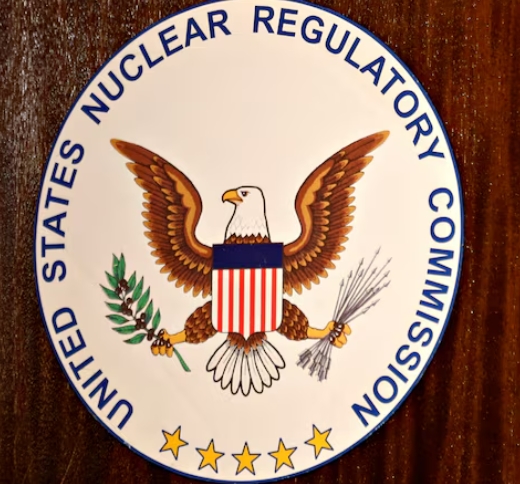
The logo of the U.S. Nuclear Regulatory Commission is shown on the podium during a public meeting hosted by the U.S. Nuclear Regulatory Commission at the San Onofre Nuclear Generating Station in Carlsbad, California, September 26, 2013.
Small modular reactors are designed for factory assembly with standardized components, unlike traditional nuclear plants built on-site. Supporters highlight their potential for improved safety, reduced risk of unauthorized access to nuclear materials, and cost savings through modular construction. Critics, however, argue that SMRs may face higher operating costs compared to conventional reactors and still generate radioactive waste, for which the U.S. lacks a permanent storage solution.
NuScale remains the only U.S. company with an approved SMR design, though building a plant has proven challenging. In 2023, the company canceled its Carbon Free Power Project with a Utah municipal power group, despite $1.35 billion in federal funding pledged over a decade, as rising costs led several towns to withdraw. John Hopkins, NuScale’s president and CEO, stated: “We now have an American technology that is near-term deployable.” He noted that up to 12 of the 77-megawatt reactors could be combined to match the capacity of a conventional nuclear plant.
Hopkins added that an SMR could be operational by the end of the decade if a customer acts swiftly, saying: “It’s really in the customer’s hands.” NuScale is in discussions with five major data center companies under non-disclosure agreements to explore SMR deployment, driven by rising U.S. power demand from data centers supporting artificial intelligence. On Thursday, NuScale’s stock fell 3.9% to $33.96 in afternoon trading.
Growing interest in nuclear energy coincides with a surge in U.S. electricity needs, the first in two decades, fueled by data center expansion. Recent executive actions aim to streamline the Nuclear Regulatory Commission’s operations and encourage nuclear plant construction on federal lands, involving collaboration between the Energy and Defense departments. While these actions do not include new public funding, they may facilitate financing through the Loan Programs Office.